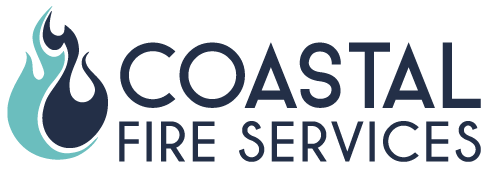Fire safety inspections are essential for maintaining safe, compliant buildings, and for ensuring occupants know how to respond in an emergency. In fact, many building occupants are not confident in their ability to act during a fire, highlighting the need for regular inspections and clear safety planning.
During a fire safety inspection, various aspects of your building’s fire protection systems are checked. This includes testing the functionality of fire extinguishers, fire alarms, emergency lighting, and exit routes. Inspections ensure all systems are operational and meet the required safety standards.
Documentation and certification are also key. They prove your compliance and help you maintain accurate records over time.
Why regular fire safety inspections matter
Fire safety inspections are not just a legal box to tick, they’re critical to keeping your building and the people in it safe. Many building owners and managers are not fully across their obligations, which can lead to serious risks. Regular inspections help identify problems early, ensure compliance with legal standards, and give peace of mind that your systems will work in an emergency.
Benefits of routine fire safety inspections
Routine fire safety inspections offer a range of benefits, including:
- Peace of mind knowing your systems are working
- Protection against fines and liability
- A safer environment for staff, tenants and customers
These inspections help ensure your fire safety equipment, such as extinguishers, alarms, and emergency lights, are always functional and ready to respond.
How regular fire safety inspections support ongoing compliance
Regular fire safety inspections are essential for keeping your building safe and legally compliant. They help identify hazards early and allow time to correct issues before they become dangerous or costly. This proactive approach not only protects the occupants but also minimises the risk of costly fines and liabilities associated with non-compliance. The frequency of inspections depends on your building’s class and usage, but all properties must meet ongoing requirements under the relevant fire safety standards.
Different building classes may require specific types of inspections to ensure compliance with fire safety regulations. These inspections are tailored to meet the unique needs of each building type, ensuring that all fire safety measures are in place and functioning correctly. Proper documentation and certification are crucial components of these inspections, providing assurance that the building meets all necessary safety standards.
Inspections must be carried out by an accredited fire safety practitioner, and records such as Annual Fire Safety Statements (AFSS) must be maintained in line with AS 1851 standards.
Consequences of ignoring fire safety inspections
Neglecting routine fire safety inspections can lead to severe consequences, such as:
- System failures during emergencies
- Hefty fines and council action
- Increased insurance premiums or denied claims
Regular fire safety inspections help prevent system failures, reduce liability, and ensure your building is always ready in an emergency. They’re not just about compliance, they are about protecting lives, enabling safe evacuation, and keeping your business secure.
Coastal Fire Services is here to help you stay compliant and safe. From fire safety inspections to certifications and ongoing maintenance, our team ensures your building meets all legal requirements year-round.

